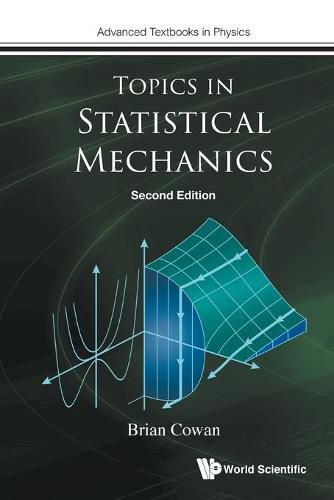Readings Newsletter
Become a Readings Member to make your shopping experience even easier.
Sign in or sign up for free!
You’re not far away from qualifying for FREE standard shipping within Australia
You’ve qualified for FREE standard shipping within Australia
The cart is loading…






This title is printed to order. This book may have been self-published. If so, we cannot guarantee the quality of the content. In the main most books will have gone through the editing process however some may not. We therefore suggest that you be aware of this before ordering this book. If in doubt check either the author or publisher’s details as we are unable to accept any returns unless they are faulty. Please contact us if you have any questions.
Building on the material learned by students in their first few years of study, Topics in Statistical Mechanics (Second Edition) presents an advanced level course on statistical and thermal physics. It begins with a review of the formal structure of statistical mechanics and thermodynamics considered from a unified viewpoint. There is a brief revision of non-interacting systems, including quantum gases and a discussion of negative temperatures. Following this, emphasis is on interacting systems. First, weakly interacting systems are considered, where the interest is in seeing how small interactions cause small deviations from the non-interacting case. Second, systems are examined where interactions lead to drastic changes, namely phase transitions. A number of specific examples is given, and these are unified within the Landau theory of phase transitions. The final chapter of the book looks at non-equilibrium systems, in particular the way they evolve towards equilibrium. This is framed within the context of linear response theory. Here fluctuations play a vital role, as is formalised in the fluctuation-dissipation theorem.The second edition has been revised particularly to help students use this book for self-study. In addition, the section on non-ideal gases has been expanded, with a treatment of the hard-sphere gas, and an accessible discussion of interacting quantum gases. In many cases there are details of Mathematica calculations, including Mathematica Notebooks, and expression of some results in terms of Special Functions.
$9.00 standard shipping within Australia
FREE standard shipping within Australia for orders over $100.00
Express & International shipping calculated at checkout
This title is printed to order. This book may have been self-published. If so, we cannot guarantee the quality of the content. In the main most books will have gone through the editing process however some may not. We therefore suggest that you be aware of this before ordering this book. If in doubt check either the author or publisher’s details as we are unable to accept any returns unless they are faulty. Please contact us if you have any questions.
Building on the material learned by students in their first few years of study, Topics in Statistical Mechanics (Second Edition) presents an advanced level course on statistical and thermal physics. It begins with a review of the formal structure of statistical mechanics and thermodynamics considered from a unified viewpoint. There is a brief revision of non-interacting systems, including quantum gases and a discussion of negative temperatures. Following this, emphasis is on interacting systems. First, weakly interacting systems are considered, where the interest is in seeing how small interactions cause small deviations from the non-interacting case. Second, systems are examined where interactions lead to drastic changes, namely phase transitions. A number of specific examples is given, and these are unified within the Landau theory of phase transitions. The final chapter of the book looks at non-equilibrium systems, in particular the way they evolve towards equilibrium. This is framed within the context of linear response theory. Here fluctuations play a vital role, as is formalised in the fluctuation-dissipation theorem.The second edition has been revised particularly to help students use this book for self-study. In addition, the section on non-ideal gases has been expanded, with a treatment of the hard-sphere gas, and an accessible discussion of interacting quantum gases. In many cases there are details of Mathematica calculations, including Mathematica Notebooks, and expression of some results in terms of Special Functions.